Views: 0 Author: Site Editor Publish Time: 2024-01-09 Origin: Site
White laser light sources, known as LEP (Laser Excited Phosphor), are becoming increasingly favored among flashlight enthusiasts and professionals for their extended illumination range, narrow beam angles, high brightness, and excellent collimation. But what exactly is this lighting technology, and how does it function? How does it compare advantageously over traditional LEDs?
What is a white laser light source?
A white laser light source, or LEP, is known for its long-range illumination, narrow beam angle, high brightness, and superior collimation.
How does the LEP white laser work?
LEP white laser technology involves a blue laser exciting a phosphor material, typically emitting yellow fluorescence, to produce white light. The blue laser focuses on a phosphor crystal coating (PCC), generating yellow fluorescence. This yellow light, when combined with the unabsorbed blue light, creates the white light we observe.
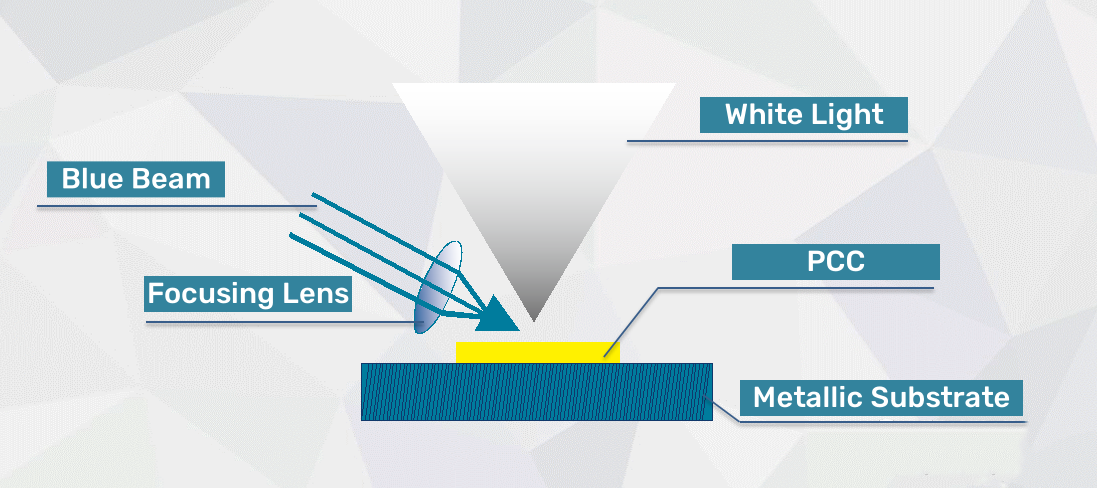
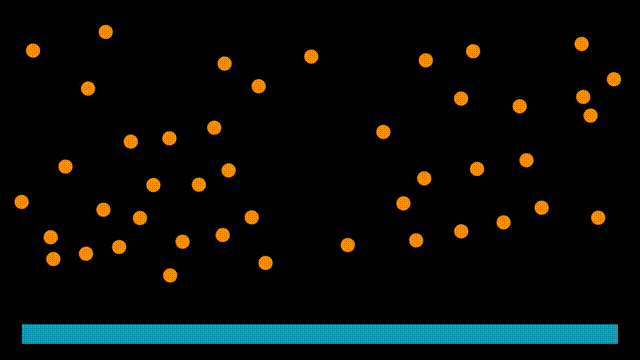
LEP vs LED: Advantages Comparison
While traditional LED light sources excel in energy efficiency, environmental friendliness, and low power consumption, they face limitations in focus, range, penetration, and light output. In contrast, LEP white lasers offer significant improvements in these areas:
Extended Illumination Range: LEP flashlights provide far greater illumination distances than LEDs.
High Collimation: LEP beams are highly concentrated and exhibit minimal divergence.
High Intensity: The light output of an LEP source far exceeds that of an equivalent LED.
Long Lifespan: Being completely inorganic solid-state light sources, LEPs boast lifespans exceeding 20,000 hours.
Professional Illumination: LEPs are ideally suited for professional applications like search and rescue and long-distance night observation.
While lasers exhibit minimal divergence compared to other artificial light sources, white laser flashlights leverage the high intensity and collimation of laser sources, making them superior in applications where the limitations of LED lighting are evident.
Experimental Comparison: LED vs LEP - Which Outperforms?
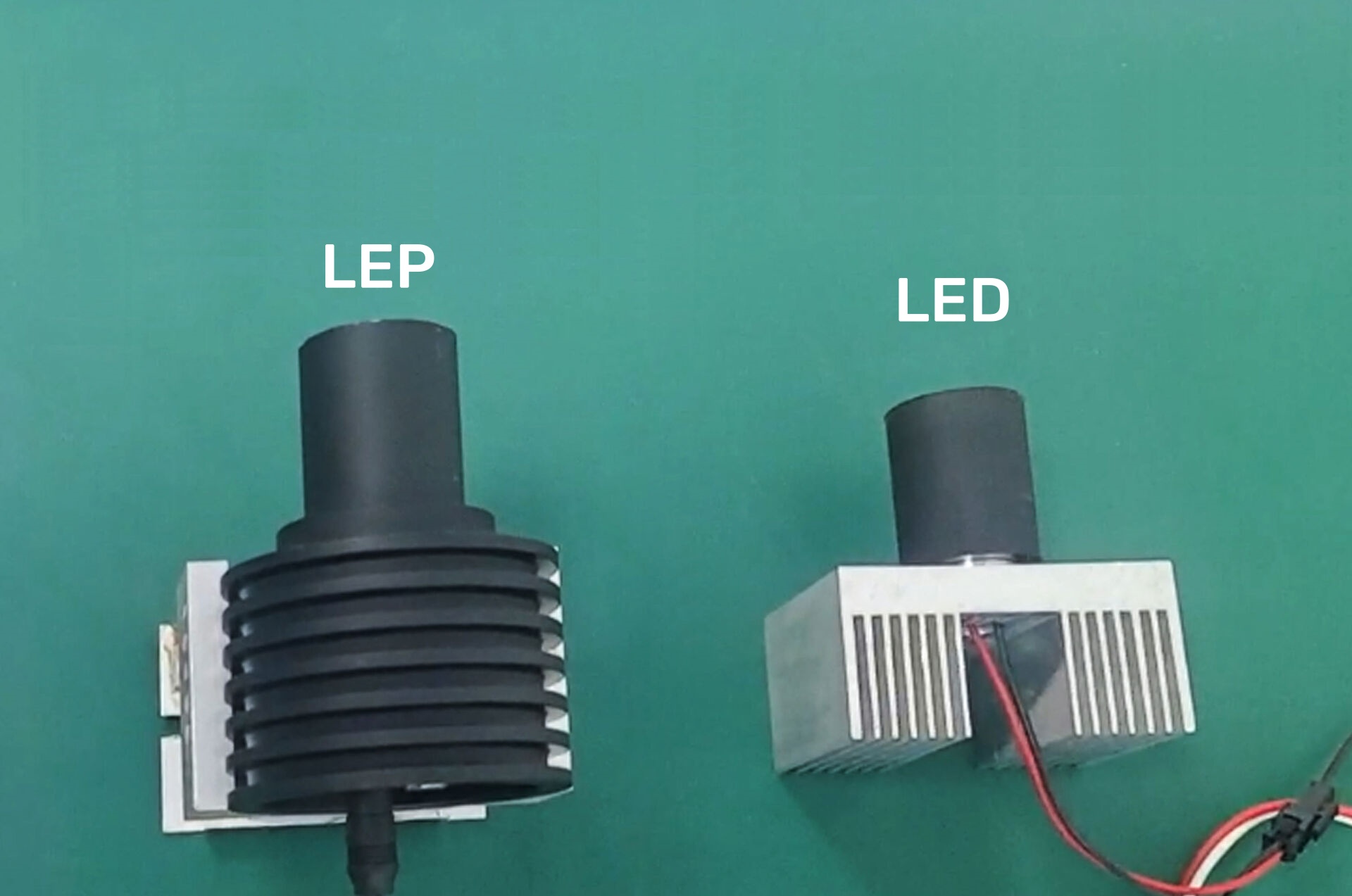
During the experiment, the light emitted from the LED first converges through a small lens and is then projected through a 27mm acrylic lens, creating a collimated beam. The LED used is from Osram's KW series, with a 1mm square light-emitting area, currently the highest nominal intensity LED available worldwide.
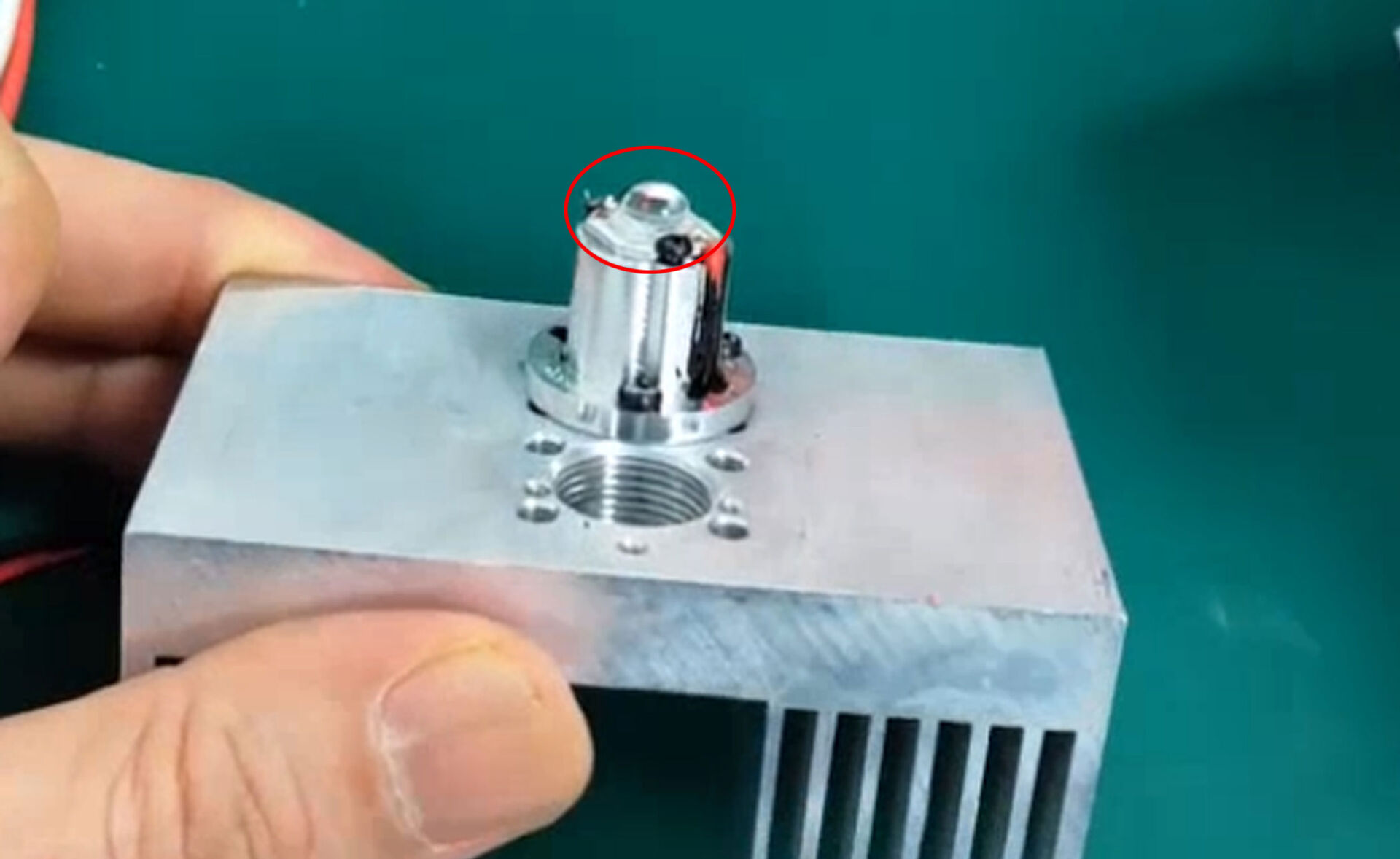
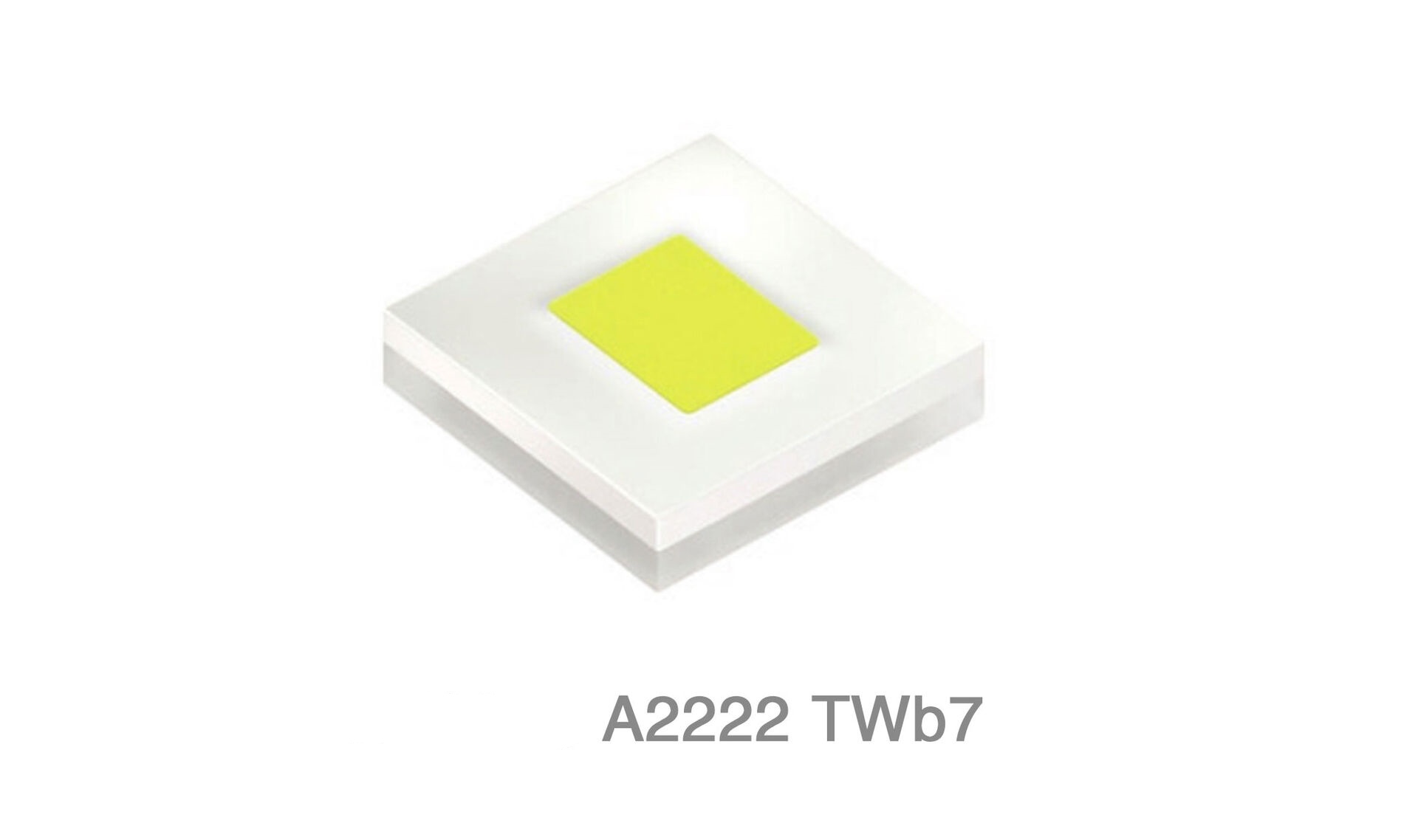
For a fair comparison, the LEP (Laser Excited Phosphor) white laser employs an identical 27mm optical system for light collection and collimation. Both test units are positioned side by side, with a test distance of 10 meters.
The beams emitted by the LED and LEP white laser form light spots at a distance of 10 meters. The experiment involves measuring the central illuminance of these two light spots. Additionally, a power consumption meter is used to monitor the power usage of both devices.
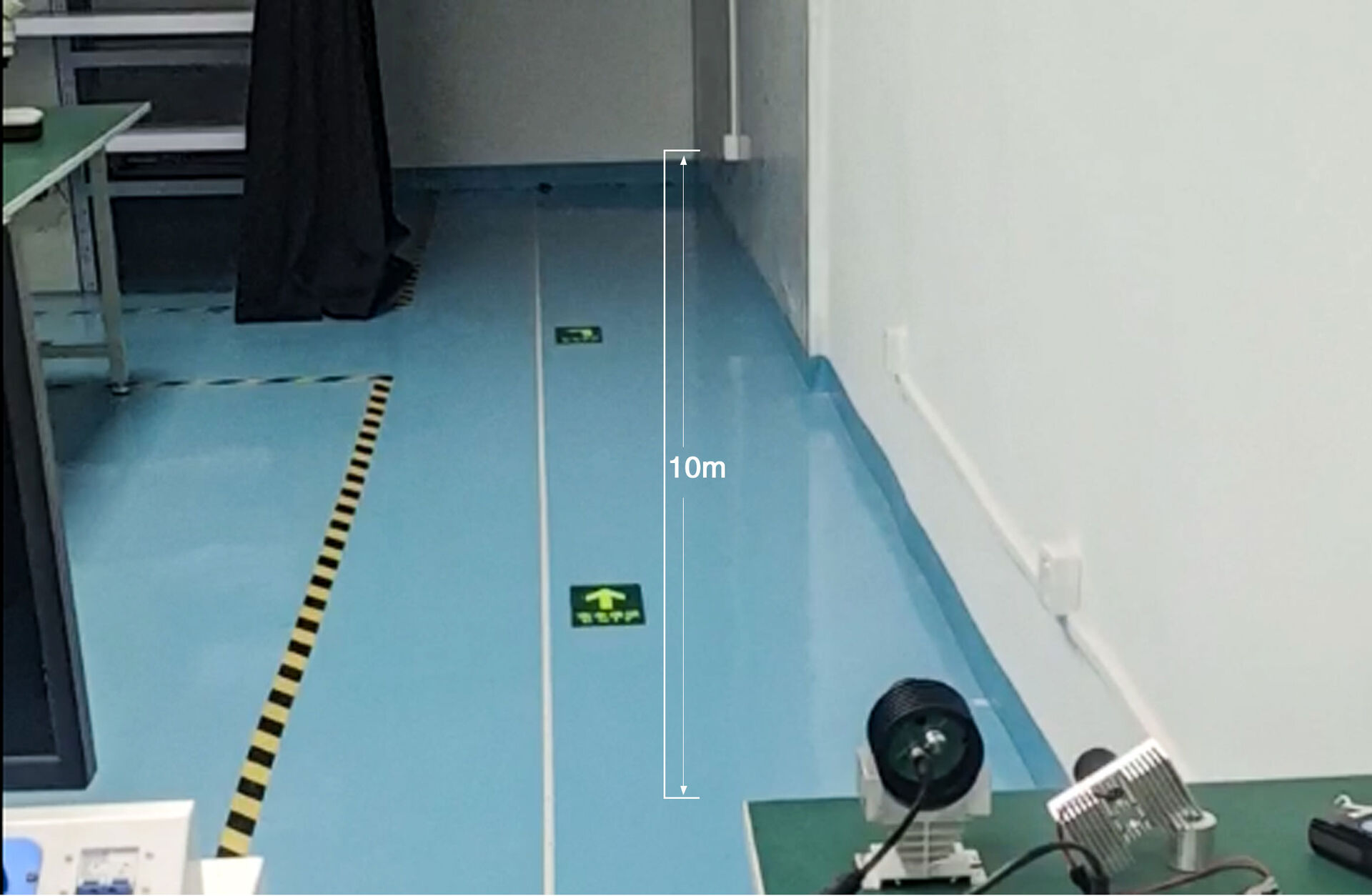
Start Testing
First, the LEP white laser is activated, creating a circular light spot. Then, the LED is turned on, producing a nearly square-shaped light spot. The light spot imaging at 10 meters is as follows .

Next, we measure the central illuminance of these two spots at a distance of 10 meters. The central illuminance of the LEP white laser spot reaches 4,400 lux, while the LED spot's peak central illuminance is at 680 lux.
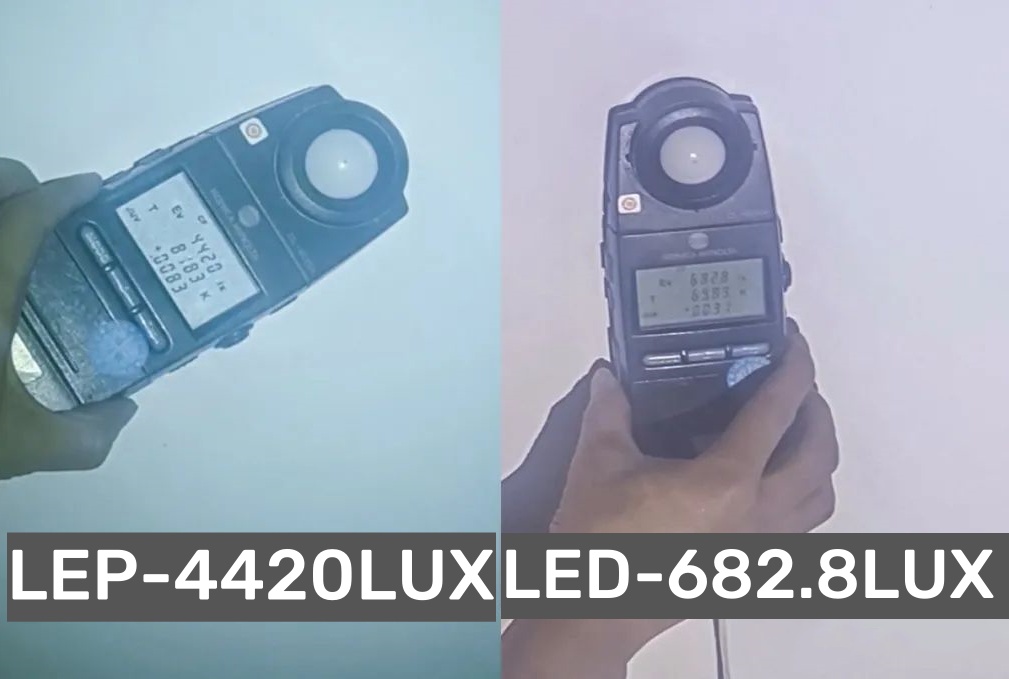
Finally, we examine the power consumption. The LEP white laser consumes 13.91 watts, and the LED consumes 10.29 watts. Both are operating at full load.
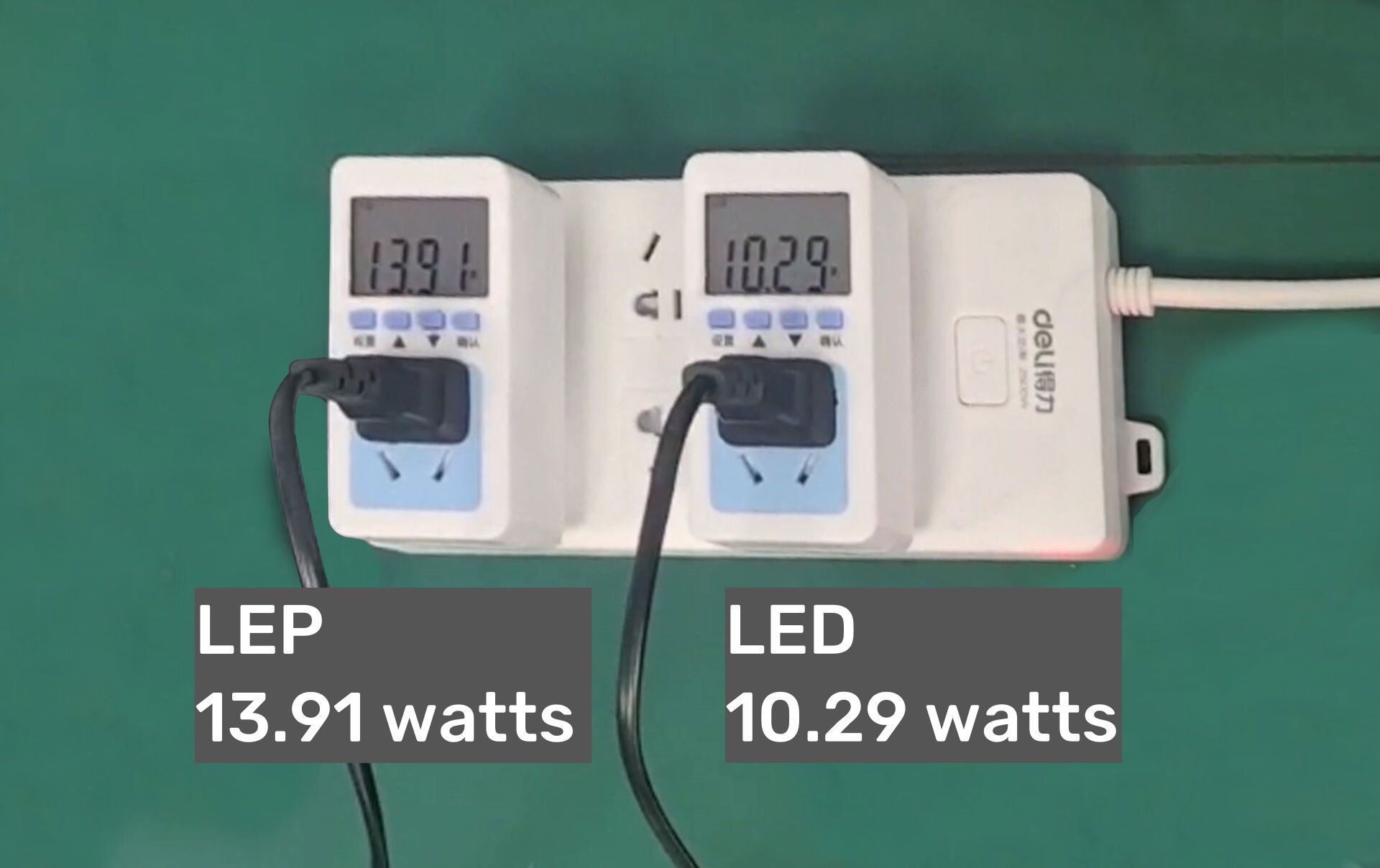
Test Conclusion
Using the same 27mm aperture and identical collimating optical systems, the LED, with a power consumption of 10.29 watts, produces 680 lux at 10 meters, equating to an intensity of 68,000 cd. In contrast, the LEP white laser, consuming 13.91 watts, achieves 4,400 lux at the same distance, with an intensity of 440,000 cd. In other words, the LEP white laser, with 1.36 times the power consumption of the LED, achieves 6.5 times its illuminance.